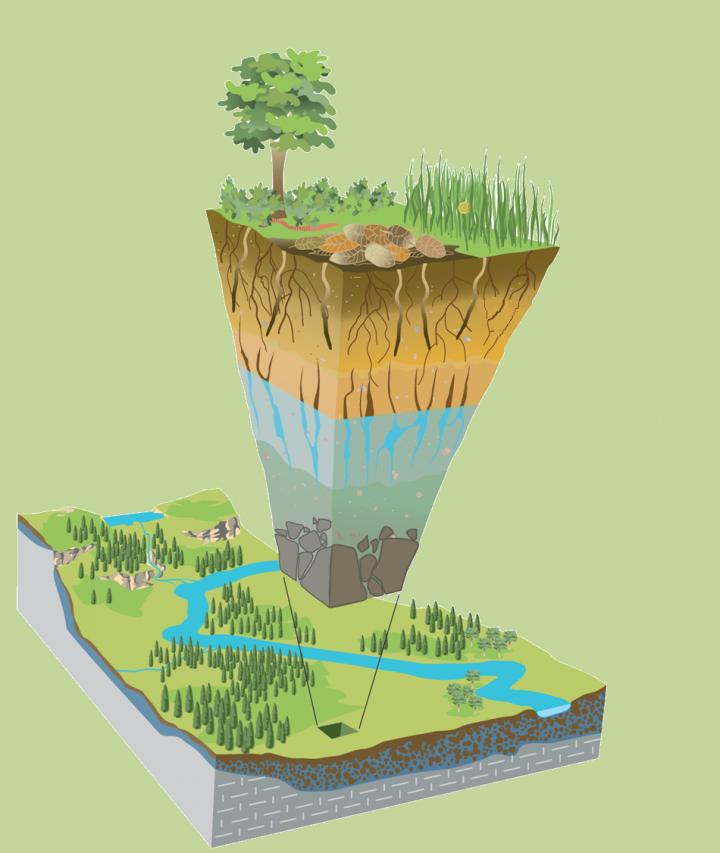NSF-supported scientists present new research results on Earth's critical zone

The top of the forest canopy to the base of bedrock is known as Earth's critical zone. Credit: NSF
Find related stories on NSF's Critical Zone Observatories.
The thin veneer of Earth's surface that stretches from the top of the forest canopy to the base of bedrock is called the critical zone. It's where fresh water flows, rock turns to soil and life flourishes.
To develop a deeper understanding of the critical zone, the National Science Foundation (NSF) supports nine Critical Zone Observatories (CZOs) across the U.S. NSF CZO scientists study how the critical zone responds to changes in climate and land use.
At the 2018 American Geophysical Union (AGU) fall meeting in Washington, D.C., dozens of CZO researchers will present new findings on Earth's “living skin.” The meeting will take place from Dec. 10-14.
CZO scientists will address such subjects as:
- Remote sensing of seasonal snow.
- Forest ecohydrology in a changing climate.
- Indicators of plant water availability and stress in drought-prone forests.
- Aquatic ecosystem responses to human disturbances and management, comparing inland and coastal ecosystems.
- Modeling the why, where and when of regional forest declines.
- The role of microbes in biogeochemical cycles.
These researchers are working to answer questions such as how landscapes evolve over human timescales and over millennia, and how that process is affected by the presence and flow of water.
They're also studying how biological processes affect physical processes such as erosion and weathering, and whether signals in the landscape can reveal information about climate — how landscapes responded to past climate change and might respond to climate change in the future.
The NSF CZOs will host a Town Hall meeting — “Critical Zone Observatories: Platforms for Collaborative Science” — on Thursday, Dec. 13, from 12:30-1:30 p.m. at the Marriott Marquis in Marquis A-C.
###
For more information, please see the list of AGU CZO science and related sessions, talks and posters.
Media Contact
More Information:
https://www.nsf.gov/news/news_summ.jsp?cntn_id=297333&org=NSF&from=newsAll latest news from the category: Earth Sciences
Earth Sciences (also referred to as Geosciences), which deals with basic issues surrounding our planet, plays a vital role in the area of energy and raw materials supply.
Earth Sciences comprises subjects such as geology, geography, geological informatics, paleontology, mineralogy, petrography, crystallography, geophysics, geodesy, glaciology, cartography, photogrammetry, meteorology and seismology, early-warning systems, earthquake research and polar research.
Newest articles

New results from the CMS experiment put W boson mass mystery to rest
After an unexpected measurement by the Collider Detector at Fermilab (CDF) experiment in 2022, physicists on the Compact Muon Solenoid experiment (CMS) at the Large Hadron Collider (LHC) announced today a…

NASA completes spacecraft to transport, support Roman Space Telescope
The spacecraft bus that will deliver NASA’s Nancy Grace Roman Space Telescope to its orbit and enable it to function once there is now complete after years of construction, installation,…

Ion-Trap Quantum Computer for Novel Research and Development
The AQT quantum computer, featuring 20 qubits based on trapped-ion technology, is now operational at LRZ’s Quantum Integration Centre (QIC), making it the first of its kind in a computing…















